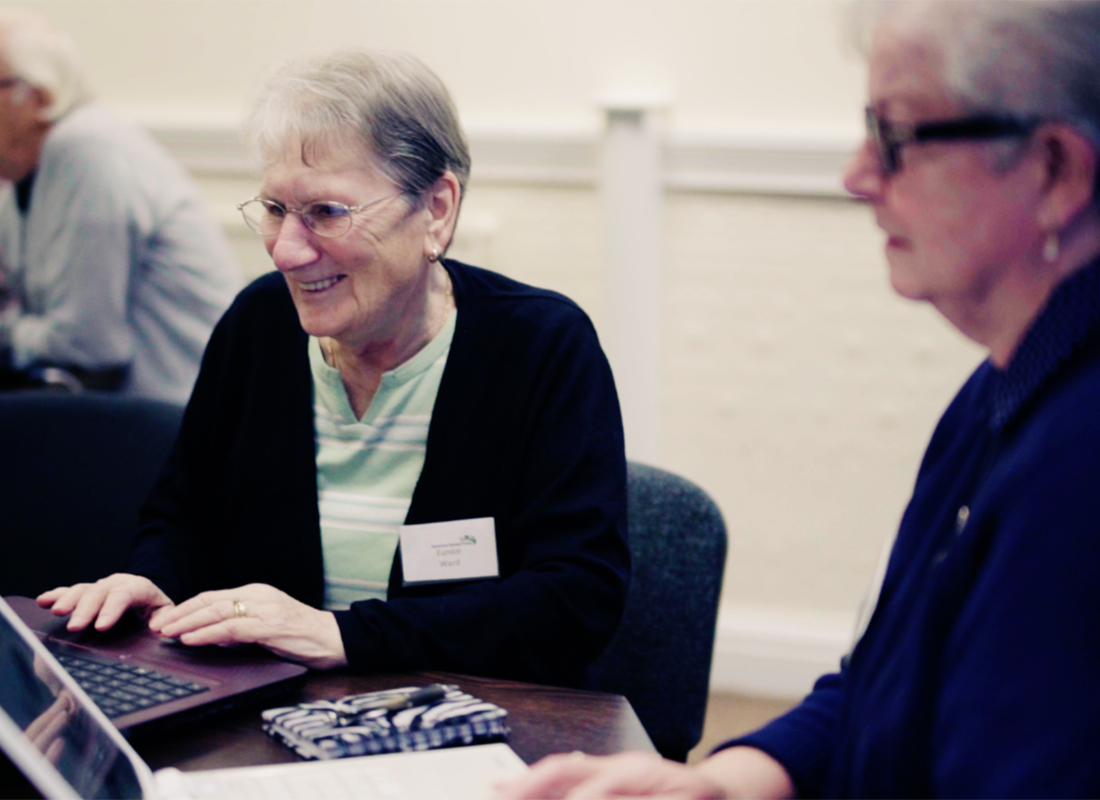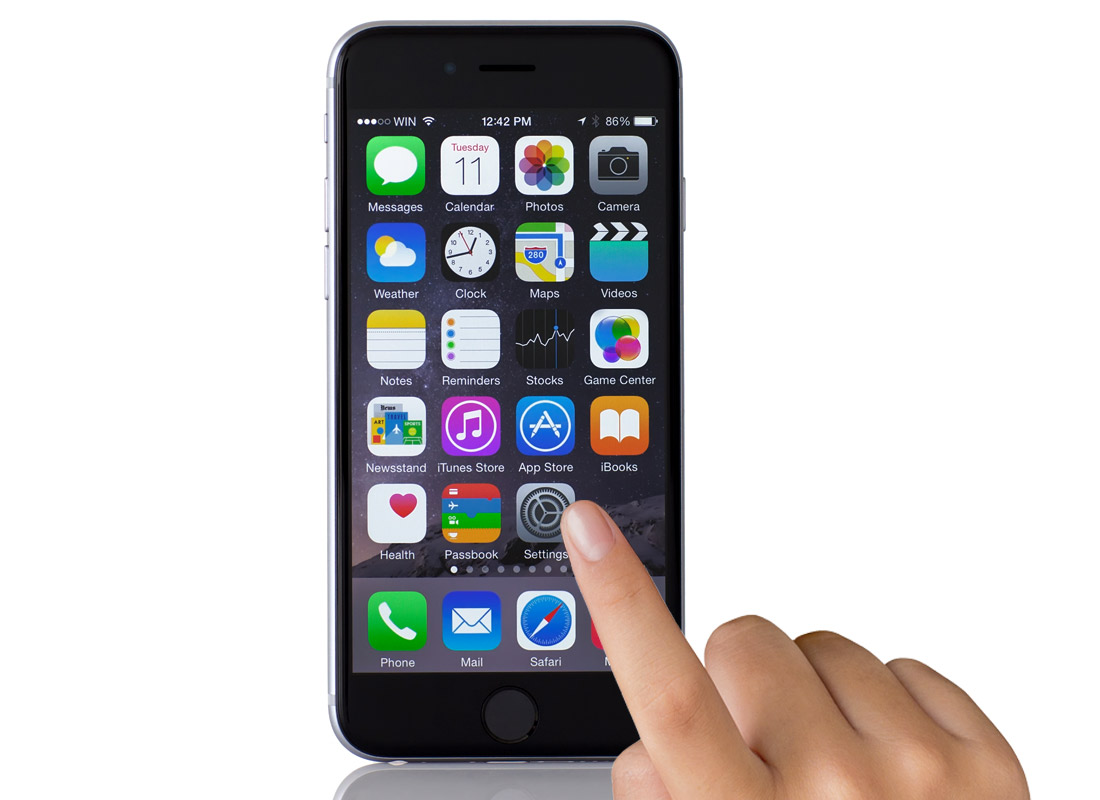What is a Digital Mentor?
What is a Digital Mentor?

What's coming up?
Millions of people don’t know how to use the internet. That means they are missing out on all its benefits, like being able to shop online, keeping in touch with family and managing important aspects of their lives.
Start activityWhat are the benefits?
For many of us, using the internet is now a natural part of our daily lives. But around 3 million Australians aren’t online.
Watch the video on the next slide to see the benefits the internet can have for people.
Be Connected - Every Australian online. An Australian Government initiative supported by: Good Things Foundation. This is represented with the logos of these organisations.
As a Digital Mentor, you’ll be wanting to tell learners and potential learners all about the benefits of being online. We’ll tell you about some of the benefits, but these are just a few examples of the interesting, creative or practical things that you can do on the internet. On screen shows to 5 topics of this video, Jobs, Health, Connecting, Government Services and Shopping.
New section: Shopping. Shopping online is really convenient. It’s also a great place to find deals and coupons to help you save money. Image on screen: 25% Off coupon appears. In 2017, 9.7 million Australians bought something online. The older generation and those in more rural regions of Australia may find it especially useful to learn how to shop online safely. Image of a tablet with the screen showing a “Grocery Online” shopping website.
New section: Health. The internet can be a great place to find information about health, helping people to better understand their health. You can find your local doctor or dentist, research medications or health conditions. You can also find lots of recipes and tips for a healthy lifestyle online too! While audio plays, three circles appear, with text reading Find local health services, Research medication and conditions, Healthy living recipes and tips.
New section: Government Services. Screencast of the MyGov website, with a user beginning to login to their MyGov account. MyGov is the online platform for Australian government services. You can access a number of government services, as well as viewing letters, statements and messages securely online. While audio plays, three circles appear with text reading Health records, Centrelink and Taxes.
New section: Jobs. Lots of employers now post job adverts and applications online. Over half of job adverts being posted there. Not only this, but the internet is a great place to find voluntary roles, or get tips to improve your CV or skills. Image on screen shows a mobile phone with a website reading Job Search.
New section: Connecting. Whether it’s by email, social media or video chat, the internet is a great way of keeping in touch with family and friends. Text on screen reads: Using email, social media or video chat is a low-cost way of getting in touch. With a WiFi connection, you can talk to people all over the world. Animation on screen shows an image of the world spinning slowly. Using the internet to connect with others can help people to feel less isolated from their loved ones. Text on screen shows the text: 60% of Australians often feel lonely. Image on screen shows an older man looking out of the window of his home.
What other benefits can you think of? Image on screen shows an older woman smiling whilst looking at her tablet. Can you think of some of the main ways you benefit from being online? Image on screen shows an older woman in a digital skills class.
Be Connected - Every Australian online. An Australian Government initiative supported by: Good Things Foundation. This is represented with the logos of these organisations.

How can you be a Digital Mentor?
Let’s have a look at the different way you can be a Digital Mentor in your community. You may already be doing some of them, which is great.
Becoming a Digital Mentor
Click on each card to flip it and read about the different ways you can be a Digital Mentor.
Inspire people to get online
Click to flip
Find out a bit more about the person you're helping. Can you find an online activity that interests them?
Develop digital skills
Click to flip
This could be starting from the basics, or helping them do something specific online.
Support family, friends and colleagues
Click to flip
You might be able to help a friend or colleague learn how to do something online.
What makes a great Digital Mentor?
Let’s hear from some Digital Mentors and learners about what makes a great Digital Mentor. First, click on Julie, one of our Digital Mentors so see what she says, then click on Oliver, another great Digital mentor to see his advice.

Click to flip
Julie says: “Listening is so important. You can find a spark that will get them really excited about being online.”

Click to flip
Oliver says: “Understand that everyone has a different level of skill or knowledge. Keep an open mind.”
What makes a great Digital Mentor?
Now let's hear from Sam, a learner and a Digital Mentor, and Eileen, a learner.

Click to flip
Sam says: “I started off by learning the basics, and now I help other people to improve their skills!"

Click to flip
Eileen says: “My Digital Mentor is really patient and shows me a few times if I don't understand things."
How to connect with people?
The four case studies above showed us what a great Digital Mentor looks like. The thing they all had in common was the fact that they could connect with their learners.
Watch the video on the next slide to see more.
Be Connected - Every Australian online. An Australian Government initiative supported by: Good Things Foundation. This is represented with the logos of the organisations.
Video background shows the 5 topics of this video: Active listening, Ask questions, Body language, Be Patient and Empathy. The images accompanying these topics show learners and Digital Mentors.
There are many ways that you can connect with people and show that you want to help them.
Active listening is about showing people that you’re listening to them and acknowledging what they say.
You can do that by simply nodding and smiling or keeping eye contact. If you ask an occasional question or rephrase what you’ve just heard it will show that you're interested in them as a person. Saying things like “I see” or “I understand” will let someone know that you understand what they’re saying.
New section: Ask Questions. One of the best ways to connect with people is to ask them questions so that they tell you their story. It will help you to avoid making assumptions about people’s situation and their abilities. You can ask open-ended questions, like “What do you normally do online?” Closed-ended questions help to check your understanding, for example, “So the text on the screen is too small?”.
New section: Body Language. Your arms, legs, posture and eyes all say something about your attitude and mood. Turn to face the person you’re helping, with your arms open. Keep eye contact with them, and a low voice. Image on screen shows “Open Posture” as an additional way to keep your body language friendly and open.
New section: Be Patient. Confidence takes time and you might need to repeat some things. You should celebrate your learner’s small achievements, and try to keep it positive.
New section: Empathy. Some learners may lack confidence, if they’ve had a bad learning experience in the past or don’t believe in their own ability. Focus on the needs of the learners, and don’t assume that things are easy.
Common barriers to getting online
There are many reasons why people don’t use the internet. Let’s have a look at some of the common barriers that people face when getting online.
Common barriers to getting online
Click the following cards to read about each barrier.
No access and expensive equipment
The cost of buying a device and having an internet connection at home is a common barrier. As a Digital Mentor, you can also organise and run classes or outreach sessions in your local community.
Internet safety and security
Some people worry that the internet is not safe. As a Digital Mentor you can support people to use the internet safely and reassure people’s concerns.
Common barriers to getting online
Click each card to read about the common barriers.
Fear of computers and low confidence
People may have had a bad learning experience in the past. Build confidence by being patient and positive.
Lack of interest and motivation
Some people feel they don't need the internet. Ask about their interests and show them the benefits of getting online!

How to choose the right language?
We sometimes forget how many technical terms we use when talking about the internet. It can be confusing and off-putting for a person who is not familiar with technical language.
Watch the video on the next slide and learn how to choose the right language.
Be Connected - Every Australian online. An Australian Government initiative supported by: Good Things Foundation. This is represented with the logos of the organisations.
Choosing the right language can help you to explain things clearly to people who are new to the internet. Let’s have a look at some of the ways that you can clearly communicate with people.
The video shows the 4 topics of the video, Use short simple sentences, Use visuals, Use analogies and Prior knowledge.
New section: Use analogies. You can use an analogy as an easy way of explaining things. They help you to explain unfamiliar things, using a familiar example. This helps people to connect their prior experience with the new concepts that they’re learning. Saying something like “Learning about the internet is like learning to drive”.
Can you think of an analogy to explain what a search engine is? You can pause the video here and take a few minutes to note your idea down.
New section: Use short, simple sentences. Using short, simple sentences is a good way of making sure you put across the key learning points. If you use complicated phrases or words, you may confuse your learners and put them off. Remember, words and phrases that seem straightforward to people who use the internet and computers daily may be intimidating to learners who are new to it.
Can you think of a simple sentence to help you explain why it’s important to create a safe and memorable password? Take a minute to note your ideas down.
New sections: Use visuals and demonstrations. When you explain something, demonstrate your point to show the learner what you mean. It will reinforce their understanding and help them to remember the concept. You can even illustrate your point with a very simple drawing. Can you think of a visual way to explain a search engine? Why not pause the video here and take a few minutes to write your ideas down?
New section: Refer to prior knowledge. Use your learner's life experience and skills to explain new things. For example, you can compare driving safely to online security - it’s not always intuitive, but it’s something that you learn. If you remain a careful driver, you won’t have any problems with online security. The image to represent this is an unlocked padlock and a car, with the padlock animating to lock. Can you think of an example where you could use a learner’s prior experience to explain how email works?
Choosing the right language
In the previous video, we asked you to think of a few ways that you could explain things more simply to learners. We've made some suggestions, however, the approach you take is up to you, and you should tailor it to the learner you're helping.
An analogy to explain a search engine
Using a search engine to find information is like asking a person who knows everything a question.
A simple sentence to explain creating a safe password
Passwords protect personal information. You wouldn't give someone your bank PIN number, so you shouldn't give someone your password.
Choosing the right language
Click the following cards to read more.
A visual way to explain how links between websites work
You could draw a picture which shows how websites link together, with arrows showing how they are connected.
Explaining how email works using a learner's prior experience
Email is like traditional mail but is instant and usually free. All you need is the person's email address.

Learning
Everybody learns differently. It's important that you let the person you're helping learn in a way that suits them best. Some people will just want to dive in. Others will want to write everything down and practise over and over again.
How people like to learn
Here are some way people like to learn. Click on each card to read more.
Listening
Some people prefer to learn by listening. This could be hearing instructions or listening to podcasts.
Watching or reading
Some people learn by reading or watching. This could be watching someone doing a task or reading a handout.
How people like to learn
Read about two more approaches ...
Doing
Learning by doing means getting stuck in and trying things out, such as completing a task online.
A flexible approach
People may not know how they like to learn. Use a variety of resources and activities to support your learners.
Peer support
If you are running sessions with a group of learners, you could encourage peer support. This is where your learners help each other to learn.

Where to start?
There is usually a logical way of using technology and the internet. That’s why it’s good to start with the basics and develop digital skills gradually.

Jane and Margaret’s story
Jane is a Digital Mentor and her learner is called Margaret.
Margaret has come to Jane’s drop in session, saying that she wants to learn how to use computers and the internet.
Let’s take a look at Jane’s approach to getting Margaret online.
Jane starts by finding out a bit more about Margaret.
Margaret’s daughter has moved across the country. She’s heard that video chatting is a free and cheap way of making calls and would like someone to show her how to do it.
She has used a computer before, but says she’s not very confident using the internet. Her daughter used to look things up for her when she still lived close by.

Jane has a plan
Before Margaret uses video-calling, Jane agrees with Margaret that it’s a good idea for her to learn a bit more about the internet first. She suggests using Be Connected: Getting started online to learn more.
Margaret will need an email address to register. Jane helps Margaret to set up an email account that she’ll be able to use for video-calling.
Next, she’s going to show Margaret onto the Be Connected course, Connecting to others, which will help her learn more about the different video-calling options available.
Jane offers to help Margaret make her first video-calls once she feels confident, by Skyping her from the next room.

Margaret is really pleased that she’s now able to video-call her daughter, and she is now keen to start using the internet for other things too. She’s going to carry on coming to Jane’s drop-in sessions so that she can keep learning more.
What would you do?
Imagine that you're running drop-in sessions. One of your learners is called Ronan, and comes to your sessions almost every week.
Ronan now asks you to help him set up and write a profile on Plenty of Fish, a dating website. What would you do? Have a think about how you’d respond, and then click 'Continue' to see our suggestion.

What we suggest ...
In response to Ronan, we suggest you say something like: “I can help you register, but you should write the profile yourself.”
If Ronan is using the internet to meet new people, that’s great. You can support him to fill in the registration form, as this is helping to improve his digital skills. But as a Digital Mentor, it’s better that you don’t get involved in people’s personal lives.
What would you do?
A learner called Jamal wants to improve his digital skills. He also struggles with spelling and has asked you to help him. How do you respond?
Have a think about what you’d do, then click 'Continue' to see our suggestion.

What we suggest ...
Say something like: “I’ll show you a few good websites that have lots of information about spelling.”
While Jamal’s problem falls outside your role or expertise as a Digital Mentor, you could refer him to a local English language classes. You could even help him search for them online to improve his search skills.
What would you do?
A learner called Stella comes into your drop-in session. You’ve helped her a few times before and she always brings in her own tablet to practise on.
On this occasion, she’s come to ask if you can fix her tablet, as it keeps switching off unexpectedly. How do you respond? Have a think about what you’d do, then click onto the next slide to see our suggestion.

Our suggestion
If you know how to help Stella, that’s great, but as a Digital Mentor, you’re not expected to be a technical expert.
If you’re not sure what the problem is with Stella’s tablet, you could turn it into a learning exercise. Help Stella find the answer online or search for the nearest shop that fixes computers.
Helping people with additional needs
Some people might face additional barriers. As a Digital Mentor, it’s good to be as aware as possible and consider ways that you might support different people.


Mental health conditions
There may be times when you’ll need to help a person who is going through a difficult period in their life. Be patient and impartial to give them the support that they need. If you feel that you need to, look for local organisations that you can refer them to.
Digital Mentors must remember the boundaries of their role. You can help someone find relevant websites and online forums where they can connect with like-minded people and get professional support. But you should avoid advising them on personal matters.
Low level of literacy
Some learners may lack confidence when they’re reading or typing. Try not to highlight or make a big deal of it. Instead, show them tools like the spell checker or read what’s on screen for them.
If someone tells you they’re not confident reading or writing, you can help them find local classes where they can go to improve their skills.
Physical disability
Don’t worry if you’re not ready to help someone with a physical disability straight away. Ask them what will help them to learn, and research what you could put in place to support this. This way, you can have the right support in place for the next time.
People who can’t get to you
There could be a number of reasons why someone may not be able to get to your sessions. This might mean you want to travel to them.
If you’re working alone or in an unfamiliar location, it’s a good idea to let someone know where you are by sending them a text message or phoning them before a session.


Accessibility
There are many ways to make devices more accessible. Most devices come with their own built-in accessibility features, usually available in the Settings part of your device.
If you’re not sure what you can do to support someone access their device more easily, search online to find out how to best support their individual needs. It might be a case of downloading a particular application, or changing the settings of the device.
Well done
Now that you’ve found out about the role of a Digital Mentor, why not reflect on what being a Digital Mentor means to you?
